Always the Other?
By Deneb Sumbul | Special Report | Published 6 years ago
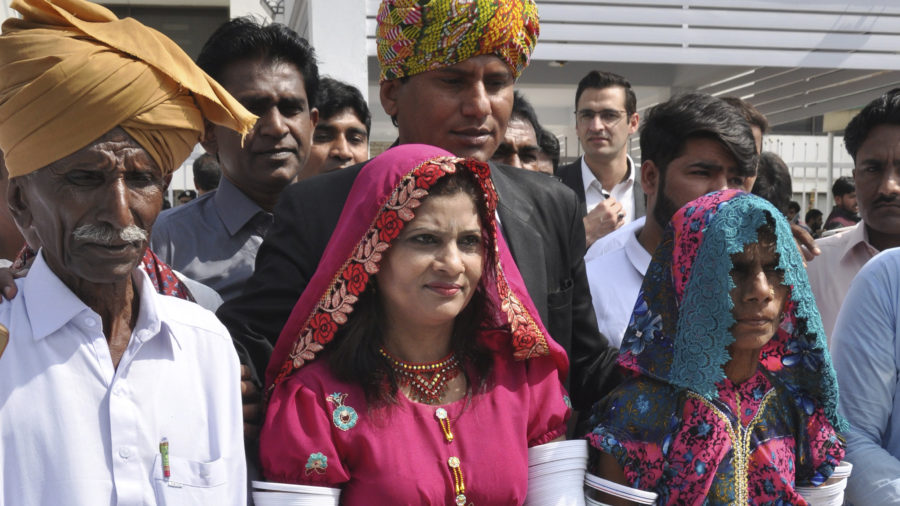
A country’s first: Krishna Kumari Kohli stands proud between her parents, in a traditional Thari dress on the day she took oath as a Senator.
Recently Pakistan’s first Hindu woman from a scheduled caste became a senator. Krishna Kumari Kohli, the 39-year-old Thari representing Sindh’s minorities in the upper house of the Parliament, became a particular focus of media attention not because of her station in life, or her gender, but because of her caste — she is a ‘Dalit.’ Although Kohli shrugged off the publicity owing to her origins, saying she represented the entire Hindu community, statistically her case is an anomaly.
Krishna’s rise to the Senate comes after a lifelong struggle to improve her life and that of her people, all of them existing on the fringes of life. In an interview with Geo, Krishna reminisced about her childhood in Dhana Gam, a remote village in Nagarparkar, Tharparkar, where she and her family battled poverty, hunger and the bonded labour they had been trapped in for two years, until an uncle paid for their freedom. After her release from that captivity, she strove to continue her education, even after she was married off while just in grade nine.
After getting a masters degree in Sociology from the University of Sindh, she actively started working against the practice of bonded labour, sexual harassment at workplaces, child marriages and for women’s rights, opening a legal aid centre for women in Hyderabad. In 2015, her brother, Veerji Kohli, won a union council seat as an independent candidate and later joined the Pakistan Peoples Party (PPP). Her brother’s foray into the political field and her own active social work propelled her into the political arena. She contested for a Senate seat on a PPP ticket — and the rest is history.
As per the Population Census of 2017, Pakistan’s population, including that of Gilgit Baltistan and Azad Kashmir, stands at over 212 million. According to official estimates, almost four-and-a half million of these are Hindus (1.6 per cent) and .25 per cent of them belong to the scheduled caste. However these numbers remain in dispute. According to the Pakistan Hindu Council, a representative body for Hindus settled in Pakistan, the Hindu population in the country is almost double the officially cited figure. Sindh — a province which housed one-fourth of the country’s Hindu population pre-Partition — still has the largest concentration of Hindus and scheduled caste communities in the country.
The Government of India Act 1935 introduced the term ‘scheduled castes,’ to replace the word ‘dalits.’ ‘Dalit,’ in literal terms means ‘oppressed people.’ Hindu communities that fall outside the purview of the four-caste Hindu hierarchy have been labelled thus since the 19th century to mean ‘outcastes’ or ‘untouchables,’ and nothing has changed since. Those carrying the tag are subject to discrimination in every aspect of their lives. Meanwhile, in 1957, the government in Pakistan, through an ordinance, defined 40 sects or castes as ‘scheduled,’ including the Bheel, Kohli and Meghwar communities.
Hindus constitute the largest religious minority in Pakistan. However, their existence is an uneasy one. As relations between India and Pakistan deteriorate, the Hindu community in Pakistan, like the Muslim community in India, are seen with suspicion. According to unofficial estimates, around 70-75 per cent of the Hindus in Pakistan belong to the scheduled caste communities and a large segment of them work as bonded labour. Most of Sindh’s Hindus form part of the PPP vote bank, as they have since the party came into existence. That notwithstanding, the majority still lack even the most basic human rights, and intolerance and extremism often rear their ugly head in the form of kidnapping for ransom of Hindu traders, forced conversions of young Hindu girls, the destruction and desecration of their temples and lynching by communal mobs.
Presently the 10 reserved seats announced by the Election Commission of Pakistan for minorities in the National Assembly are allocated among the political parties according to proportional representation. For the 2013 elections, through the Selection System under the Joint Electorate imposed by General Pervez Musharraf in 2002, minority seats in the National Assembly were divided accordingly, between the PML-N (6), PPP (1), PTI (1), MQM (1) and JUI (1). Six Hindus from the Punjab and Sindh came to represent the minorities in the National Assembly. Meanwhile, six members of the Hindu community became members of the Sindh Assembly.
Naghma Sheikh of the Democracy Reporting Institute (DRI) — a think tank that works with local governments and civil society to strengthen Pakistan’s electoral process and press for the implementation of Pakistan’s international labour and human rights commitments — points out the various issues Hindu ministers have taken up in the National and Sindh Assemblies and the challenges they have faced.
The legal status of the National Commission for Minorities established in 1990 remains unknown, nor have its governing rules been framed by the government. Headed by the minister of religious affairs, it has held five meetings in five years. In April 2018, three private member bills which had been moved separately by Beelam Hasnain, Lal Chand Malhi and Sanjay Perwani on The Commission for Minorities Bill in 2015 and 2016 came under discussion in the National Assembly’s Standing Committee on Religious Affairs.
The government functionaries resisted each bill, saying the ministry was formulating one of its own, which it will be presenting in the National Assembly. Ali Muhammad Khan, heading the sub-committee, strongly objected, saying private member bills were consistently being thwarted by the government. He also reminded the committee that after the 18th Amendment, the matter of minorities had been devolved to the provinces — and that the name of the commission had been changed to the National Commission of Interfaith Harmony.
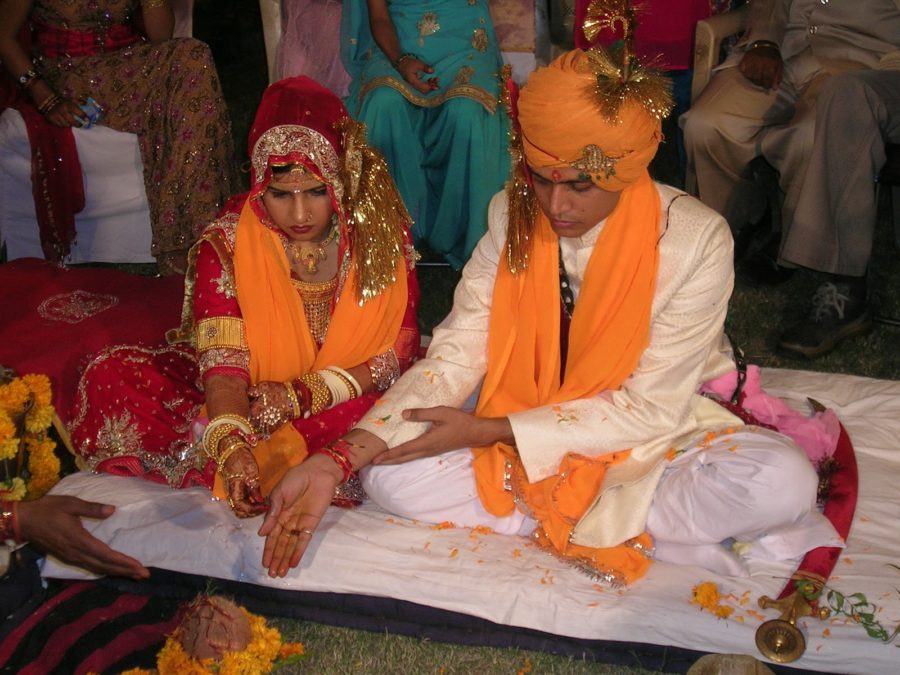 A comprehensive Hindu Marriage Bill 2017 was passed with overwhelming support in the National Assembly last year — after three failed attempts to push it through in 2008, 2011 and 2012. This bill is the first personal law for the Hindu community, applicable in the Islamabad Capital Territory and all provinces, except Sindh — ironic since minority MNA, Dr. Ramesh Kumar Vankwani from Tharparkar, Sindh, had along with others, persisted for three years to see this bill through. This bill covers the registration of marriage, separation and remarriage, setting a minimum age for marriage of members of the Hindu community — 18 years for both boys and girls. The law includes a shadi parath — a marriage certificate equivalent to the nikahnama for Muslims, to be signed by a pundit and registered with the relevant government department.
A comprehensive Hindu Marriage Bill 2017 was passed with overwhelming support in the National Assembly last year — after three failed attempts to push it through in 2008, 2011 and 2012. This bill is the first personal law for the Hindu community, applicable in the Islamabad Capital Territory and all provinces, except Sindh — ironic since minority MNA, Dr. Ramesh Kumar Vankwani from Tharparkar, Sindh, had along with others, persisted for three years to see this bill through. This bill covers the registration of marriage, separation and remarriage, setting a minimum age for marriage of members of the Hindu community — 18 years for both boys and girls. The law includes a shadi parath — a marriage certificate equivalent to the nikahnama for Muslims, to be signed by a pundit and registered with the relevant government department.
The Sindh Assembly was the first to formulate a Hindu Marriage Act in 2016, technically the first legislative initiative in parliamentary history to register Hindu marriages. It was passed in a hurry to principally restrict the federal legislation, which if enacted at the time, would have had to be implemented in Sindh in the absence of a provincial law. This initiative was an imperative in the face of the abductions and forced marriages of Hindu women to Muslims, several of whom were married, but there was no record of their marriages since none existed.
However, the Sindh Assembly’s Hindu Marriage Law was not as comprehensive as the National Assembly’s, and only provided marriage certification, without any provision for separation, divorce or dissolution of marriage.
But on May 26, at the end of its five-year term, the Sindh Assembly adopted the Sindh Hindu Marriage Amendment Bill 2018, which allows either spouse the right of separation by mutual consent. Previously such cases were decided by their jirgas, which invariably denied any rights to the women and children. The amended bill will not only provide them financial security, but give divorced and widowed Hindu women the right to remarry six months after separation or the demise of the spouse.
A private member’s bill called the Sindh Minorities’ Rights Commission Bill 2015 presented by PML-F MPA, Nand Kumar Goklani, was passed unanimously in 2016 in the Sindh Assembly. The bill is aimed at “establishing a commission to provide a platform to look into various grievances of the communities of religious minorities and to monitor and suggest a mechanism for accelerating the pace of socio-economic development of these communities.” The commission, it was stated in the bill, would have minority representatives that would work “for the promotion and protection of the identity of religious minorities at the provincial level.” The proposal is now expected to go through after the next general elections.
Nand Kumar Goklani, who hails from Sanghar and is part of seven standing committees, including one on school education, raised the issues of the children of minorities having to study Islamiat, and of the biased curriculum in textbooks. However, a provision in the bill titled ‘Age of Conversion’ became controversial with fundamentalist religious groups. The provision, which states “no person shall be deemed to have changed their religion until they attain the age of maturity” ie. 18 years, is presumably aimed at the increasing frequency of forced conversions of minor Hindu girls of the lower caste, particularly from the districts of Tharparkar, Umerkot and Mirpurkhas. According to the Pakistan Hindu Council and The National Commission for Justice and Peace, 1,000 Christian and Hindu women and girls are abducted each year, forcibly converted to Islam and made to marry their Muslim kidnappers or rapists.
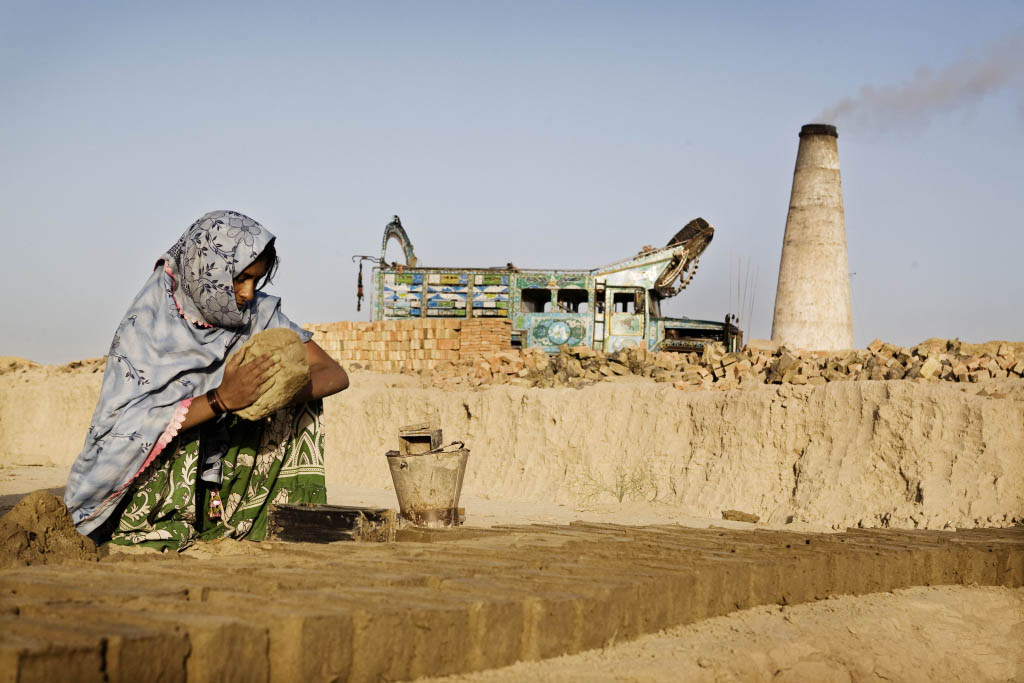
The oppressed: Approximately 80% of the scheduled caste live in bonded labour, while only in sanitation do they get 100% job opportunities.
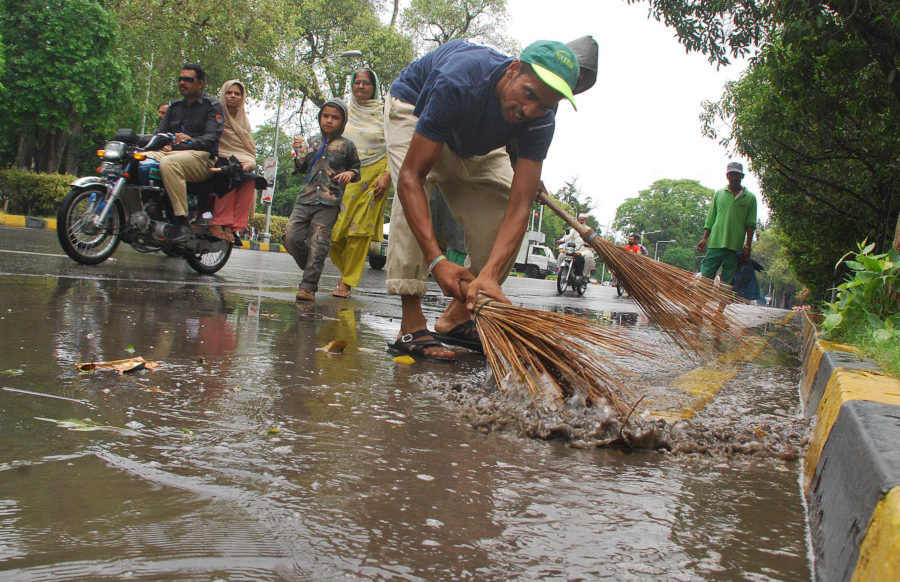 In 2017, the National Assembly passed a comprehensive landmark Forced Conversion Bill officially known as the Criminal Law (Protection of Minorities) Bill 2017 to stymie forced conversions. All the major political parties took credit for the bill, and the law was adopted by the three provincial assemblies. Also tabled by Nand Kumar Goklani in the Sindh Assembly as a private bill was the Sindh Criminal Law (Protection of Minorities) 2015 which was passed unanimously the following year. But this bill has since been languishing because several Muslim religious leaders continue to demand its repeal. They, in fact, launched a movement against it, claiming the age bar of 18 years went against Shariah laws, the Constitution and the Charter of the United Nations.
In 2017, the National Assembly passed a comprehensive landmark Forced Conversion Bill officially known as the Criminal Law (Protection of Minorities) Bill 2017 to stymie forced conversions. All the major political parties took credit for the bill, and the law was adopted by the three provincial assemblies. Also tabled by Nand Kumar Goklani in the Sindh Assembly as a private bill was the Sindh Criminal Law (Protection of Minorities) 2015 which was passed unanimously the following year. But this bill has since been languishing because several Muslim religious leaders continue to demand its repeal. They, in fact, launched a movement against it, claiming the age bar of 18 years went against Shariah laws, the Constitution and the Charter of the United Nations.
It was after religious parties and groups threatened to lay siege in front of the Sindh Assembly, that the PPP caved in and decided to amend the provision that fixed 18 years as the minimum age for being able to legally convert from one faith to another. The Sindh Governor, Justice (retd) Saeeduzzaman Siddiqui refused to ratify the bill and asked for it to be reconsidered, while the PPP increasingly shied away from it, even after the alleged kidnapping and forced conversion of a minor Hindu girl, Ravita Meghwar, from District Tharparkar, which triggered demonstrations and protests by civil society, Hindu activists, and progressive parties of Sindh under the banner of ‘Sindh Civil Society Forum.’
These laws are only the tip of the iceberg of injustices and oppression suffered by Pakistan’s minorities, which include the Hindus — in particular the scheduled caste. The lower caste and members of the scheduled caste strongly feel that this injustice continues because their political leaders and representatives are selected, not elected, and because as a community, they are largely unempowered. During and immediately after Partition, an exodus of upper-caste Hindus to India and elsewhere, mostly left the lower castes of Hindus, especially in Sindh.
According to Dr. Sono Khangharani, a leader in the social development sector, presently heading two organisations, the Thardeep Rural Development Programme (TRDP) and the Sindh Rural Support Organisation (SRSO), “It was the responsibility of the Census held in 2017 to ensure an accurate picture of Hindus and the scheduled caste minority population in Pakistan. There are a total of 37 minority seats in the National Assembly (10), the Senate (4) and the provincial assemblies (23), but only four of those occupying them are from the scheduled caste — an MPA each in the Punjab and Sindh Assemblies, and two in the Senate. This despite the fact that of the total Hindu population in Pakistan, 80 per cent belong to the scheduled caste. The PPP only awards them a few seats because of their vote bank.” Most of the scheduled caste representatives in Sindh have been nominated by the PPP. There is only one Hindu on a PML-N seat, while another is a MQM lawmaker.
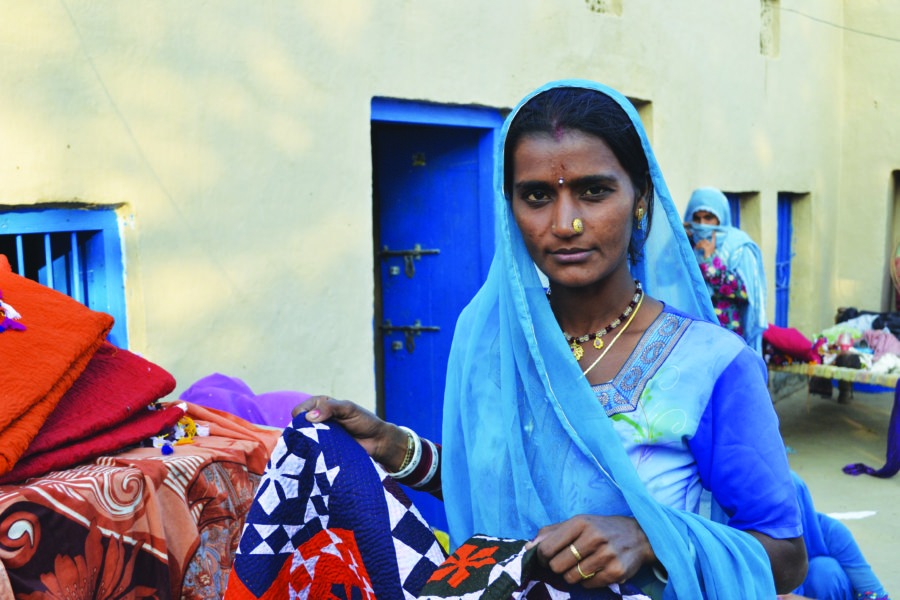
Dalit women are usually victims of forced conversions.
Khangharani continues, “The biggest flaw in the present system of reserved seats is that Hindu representatives are selected through someone’s reference. They belong to the upper castes and are awarded election tickets based on their wealth and how much money they can spend on elections. Meanwhile, these representatives have done nothing for their community, because they can’t — there is no system for it. They have no choice but to follow the party line. Till today we have not learnt what their independent views are.”
The first constitution of Pakistan in 1956 ensured a six per cent reserve (job) quota for the scheduled castes, which was implemented through a Presidential Ordinance the following year. Since they did not have a representative, the Hindu representatives in the Parliament had those seats converted to a five per cent quota for minorities without ensuring any for the scheduled caste.
“Before 1971, there were four seats for the scheduled caste in the National Assembly. When East Pakistan separated, the number of representatives of the scheduled caste were reduced drastically and they were left with only two seats in the National Assembly. Under the military regime, the general elections held in 1985 had a separate electorate in the National Assembly as well as the provincial assemblies. Then the dictator General Zia-ul-Haq distributed 10 reserved seats, including among these four for the Hindu community. Then the figures in the 1998 Census were fiddled with to show that there were only 300,000 people of the scheduled caste in Pakistan — the reason why we didn’t get a reserved seat,” says Khangharani.
Before the amendment to the Constitution of 2008, the National Assembly had three reserved seats for the scheduled caste. Dr Khangharani explains: “The upper-caste Hindus in Pakistan at the time gave the argument that the scheduled caste population was so small, that their reserved seats should be merged with the minorities’ seats. So after 2008, the scheduled caste not only lost the privilege of two reserved seats in the National Assembly, but their quota was also completely finished.”
He adds, “Krishna Kohli did not arrive in the Senate on a reserved seat. The PPP compensated her community by nominating her. There is no pressure for her to acknowledge her scheduled class background, and it will not be politically correct for her to do so, but, in any case, by herself she will not be able to do anything. There is a legal division between Hindus and the scheduled caste, and in religion there is discrimination as well. Muslims have not caused the amount of damage to the scheduled caste, as Hindus have.”
There have been conversations about direct representation for minorities, but not in the Parliament. The Dalit Sujag Tehreek (DST) is a movement representing the scheduled caste communities of Hindus, which include Kolhi, Bheel, Meghwar, Oad, Bagri and other sects. Radha Bheel, an activist from Tharparkar, is the chairperson, while Dr Sono Khangarani is the convener.
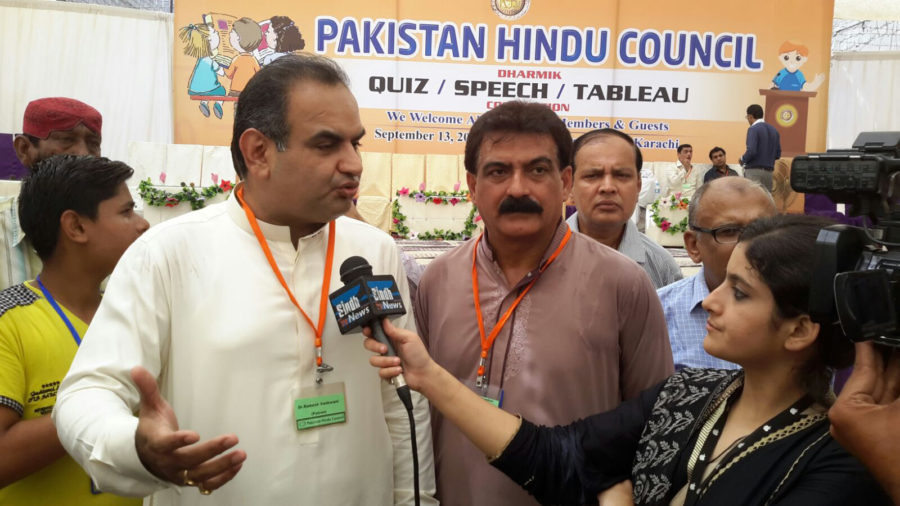
MNA Dr. Ramesh Kumar Vankwani, who also represents Thar in the National Assembly, is also the patron-in-chief of the Pakistan Hindu Council.
“We started this movement in 2016 to counter the numerous social, economic, cultural and political injustices faced by the scheduled caste. By calling ourselves Dalit, we don’t in any way mean that we are untouchables. By the term we mean the underprivileged and the crushed, all of which signifies the situation the scheduled caste is in. However, there is no religious restriction in our Tehreek — we have Muslims, Christians, Sikh and Hindus,” says Bheel. “The Dalits are internationally recognised as the severely marginalised and the definition is not restricted to Dalits of the Hindu religion, but also refers to the marginalised in other religions.”
She explains further, “The two stratas among the Hindus — the lower and the upper caste — are an acknowledged fact. The upper-caste comprise invariably rich Hindu (Jati), mostly investors and businessmen whose families are residing abroad. The political parties prefer them because they are monied. The Dalits don’t have such funds, which is why it is harder for them to reach the assemblies. An approximate ratio: for every 20 Hindus in the government, there is only one of the scheduled caste. Our population exceeds the upper caste Hindu population considerably. Going by our numbers, we should have at least one representative per district.”
Radha Bheel continues, “Among the 42 castes in the Hindu religion, we are called Shudras. The constitution promises five per cent quota to all minorities. Dalit women face every kind of injustice, including rape, and are always vulnerable to violence. Bonded labour, forced conversions and harassment are only a few of our other burning issues, but to begin with, our primary focus remains on achieving the social, economic and political rights given by the Constitution.”
She adds, “Since the creation of Pakistan, about 120 Hindus have become members of the National Assembly — out of which 30 to 40 have been Dalit, but never a woman, Krishna Kohli being the first. We have two male representatives from the scheduled caste, Dr. Khatu Mal Jeewan (Special Assistant to the Chief Minister on Minority Affairs, PPP) and Senator Gianchand, but they barely have a voice. Even the old quota system kept us behind. There are quotas for women, the disabled, for the rural and the urban population, but not for the scheduled caste. Dalits perform virtually 100 per cent of the jobs in sanitation, but have no other positions open to them through job quotas. Since we are the downtrodden, surely we are entitled to at least a few jobs, otherwise it’s an injustice.
“To make matters worse for the community, in Pakistan the term Dalit has become controversial, especially in Sindh. Now we are accused of spreading hatred and being Indian spies and the enemies of the state — even by our own people. What people don’t understand is that our cause is part of an international movement to further the Dalit cause, not undermine our nation.”
Bheel discloses, “There is a pattern among the Hindu MNAs and MPAs of acquiring a license for a liquor store as soon they come into office. These licenses are not permitted to Muslims. They also like building temples and get the lower caste deeply involved in matters of the Bhagwan, while they conduct politics and mint money. I still don’t know how many schools or vocational centres they have opened, or if they have given any scholarships to anyone from our caste, although they are in the privileged position of having available to them many government scholarships and grants, specifically earmarked for members of the community. And there is the medical funding. Last year, MPA Nand Kumar Goklani was sanctioned one-and-a half crore rupees from the Sindh government for his daughter’s medical treatment abroad. [She is suffering from a complicated congenital heart problem]. But they seem to assume that people from the lower-castes — their main Hindu vote bank — never fall ill.”
Explaining the caste differences Bheel says, “Since we gained more social awareness, we realised the need for more representation in the assemblies. Krishna Kohli rose to the Senate only after we created a noise for the last four, five years. I’m confident that she will work for the upliftment of the scheduled castes. But despite what she may say, she will have to toe the party line because she reached the Senate on a party ticket. We welcome other political parties to include us, as the PPP has done. It has people from the various scheduled castes.
“The Pakistan Hindu Council (PHC) has about 2,000 Hindu members, of which only seven are from the scheduled caste. And they were included only after we pressurised them.”
Anthropologist Dr. Zufiqar Ali Kalhoro, Department Head of Development Studies at Pakistan Institute of Development Economics, acknowledges the disconnect between the Hindu political representatives and the lower caste Hindu population, but he is also of the opinion that they do make efforts for their community. He explains, “The upper-caste Hindus have not only built and restored various temples, but erected elaborate shrines over the tombs of Sufi saints such as Chando Pir, Miyon Shah Ghazi and Rabu Shah in Tharparkar district whom, both Muslims and Hindus follow. The difference between the upper-caste and lower caste Hindus is no different than what we see between several wealthy upper-class Muslim representatives in the assemblies and their poverty-ridden constituencies.
“On the other hand lineages from the scheduled castes, such as the Meghwar, Sutsar, Oad, Bheel and others are doctors, teachers, have doctorates and several are abroad on scholarships from the Higher Education Commission.
“As for the abductions of Hindu women and minors, the Muslim communities living in those and other remote areas face the same situation except that most cases go unreported out of fear. It is basically socio-economic class difference in both religions.” Dr. Kalhoro however agrees that the lower castes should be accomodated to vote for representatives of their own choice.
Case in point is the PHC which is running 13 schools across Tharparkar where 700 students are enrolled. Last year PHC leader and MNA Dr Ramesh Kumar Vankwani led a high-level delegation of the Council — including President Hotchand Kirmani, Finance Secretary Paman Lal, Dr Shankar Lal, and Aakash Manjiani to the Odani village in Tharparkar, where a fire had burnt down 220 houses and cattle, leaving 2,000 people homeless. In collaboration with Pakistan Bait-ul-Mal, the PHC provided financial assistance of Rs 10,000 to each household. Moreover, 100 deserving students were given scholarships of Rs 10,000 each to continue with their education.
At a recent consultation meeting on Minority Rights jointly held by the National Commission for Human Rights in collaboration with Potohar Organisation for Development Advocacy (PODA), human rights activist, author and philosophy teacher at the Sindh University, Jamshoro, Professor Amar Sindhu, said that “there are many layers to the minorities issue.” Her view is that white-collar minorities are still able to seek refuge behind the law, but when it comes to the poorer minorities, very few hands are extended to save the accused, but several to beat them. “The blasphemy case that surfaced in Sanghar recently, involving a member of the scheduled caste, is a case in point. While the international human rights may be right about the conventions, — the kind of atmosphere the minorities have to live under is different and not considered — there is a gaping class issue.”
A teenage Hindu girl, Ravita Meghwar, allegedly abducted near Nagarparkar in southeastern Sindh was married off to a Muslim man twice her age. Her statement to the court read she had married of her own free will, after converting to Islam. Sindhu who was part of the civil activists fighting for her case, explains, “It was said that Ravita was 16, but when she was presented in court, she looked more like a malnourished 12-year-old. Being the daughter of a poor farmer, she was looking at her hennaed hands and bridal clothes like a child would at toffees. After fighting her case for three days, the judge ordered her return to her in-laws, saying it may be true that the underage marriage was unlawful, but if a marriage has already taken place, the law does not say what to do.”
Sindhu continues, “A week after Ravita was returned to her in-laws, she was locked up and now she is sending out cries for help to free her. The lawyers from the minority community were unable to fight for her openly because they were being threatened from all sides. When we called a meeting in Ravita’s case as a social responsibility, the majority in the meeting were from the minority communities and only a handful from the majority Muslim community.”
Pirbhu Satyani, a human rights activist working for the Pakistan Institute for Labour Education and Research, agrees that because Hindu representatives on reserved seats do not have a constituency, that there is a certain disconnect between the upper and lower castes. However, he feels they do sometimes pick up issues faced by the majority of their community, for instance Nand Kumar Goklani.
Satyani explains that these representatives are provided information and research by forums and organisations such as the National Lobbying Delegation for Minority Rights, of which Satyani is a part. The delegation has 24 minority members and works with ministers, heads of institutions and civil society on minority issues and is currently following up with issuing notifications to the Supreme Court of Pakistan, the federal government and the Government of Sindh outlining the need for creating special quotas and space vis a vis employment opportunities for minorities in all public sector institutions.
Satyani also points towards the Supreme Court’s landmark human rights judgement of June 19, 2014. In the 32-page judgement, authored by Chief Justice Tassaduq Hussain Jillani, he has asked the federal government to constitute a National Council for minorities’ rights and to form a special task force for the protection of the worship sites of minorities. The judgement reads, “It needs to be reiterated that under the Constitution minorities have a special status. This constitutional status has a historical background. It would be counter-intuitive if the right to freedom of religion, enshrined in Article 20, is interpreted in the manner which has the effect of encroaching upon religious freedoms of minority religions in Pakistan.”
Unfortunately, good intentions and wise judgements aside, much more is needed to ensure that the minorities of Pakistan – that pristine white strip on the Pakistan flag – are provided the rights accorded to them by the Constitution, in both letter and spirit.
The writer is working with the Newsline as Assistant Editor, she is a documentary filmmaker and activist.


